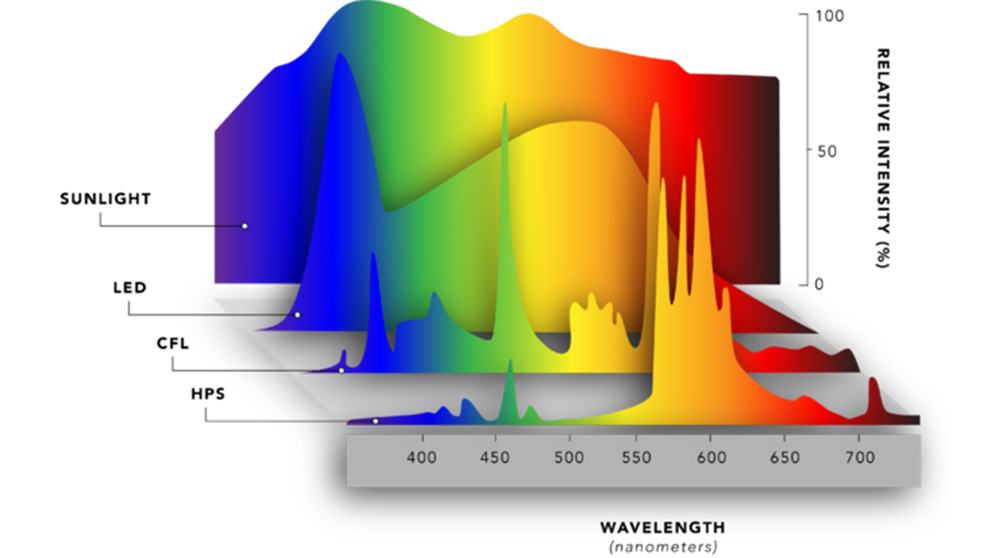Return to crop lighting article
The chart below compares the two most common types of lighting systems found in today’s greenhouses.
| LIGHT TYPES | HPS (High-Pressure Sodium Fixture) |
LED (Light Emitting Diode) |
|
| Traditional LED | Dynamic Lighting (lights + software) |
||
| Wavelengths produced | Fixed spectrum | Fixed spectrum | Able to alter/adjust the spectrum |

Blue light rays encourage photosynthesis, where LEDs shine.
Note: CFL, compact fluorescent lamps are not used in commercial growing settings, and commonly
found in household applications.
|
|||
| Cost | $ $200 - $250K/acre |
$$$ $240 - $400K/acre |
$$$$$ $500 - $525K/acre |
| Life Span | 2-year warranty Approx. 20,000 hours |
5 to 7-year warranty Approx. 50,000 – 60,000 hours |
|
| Benefits | Offer lowest cost entry into the lighting market. | No warm-up, no cool-down.
Highly efficient, rebate programs exist off-setting the initial cost. 40% less power than HPS. |
Everything a traditional LED can do plus:
|
| Drawbacks | Relative to an LED fixture:
|
Light is more directional, can target plant canopy.
Need knowledge & expertise to run these lights effectively. |
|